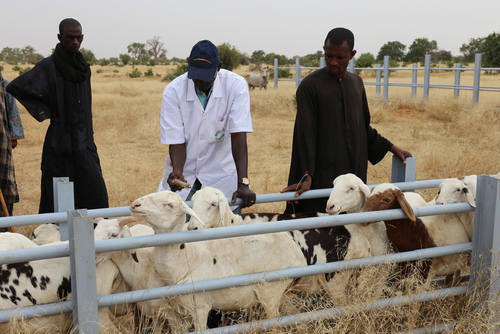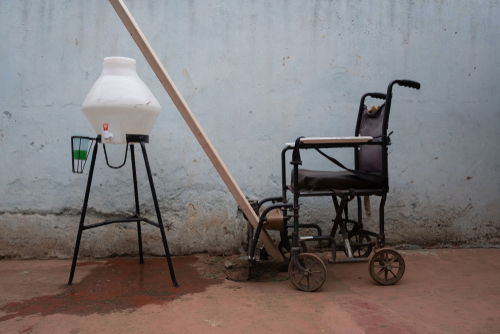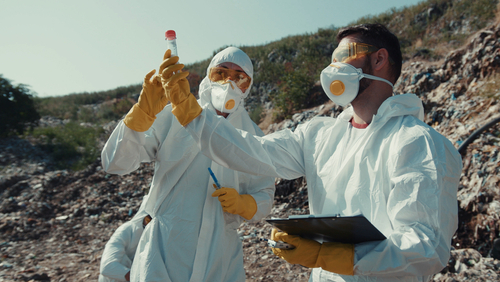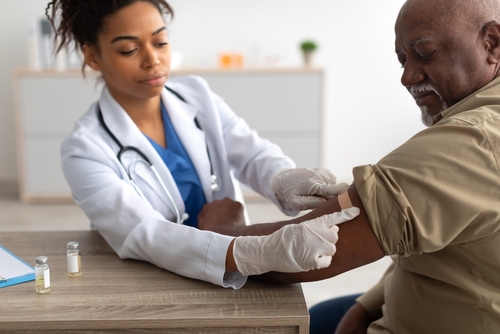March 27, 2024

Quantifying the burden of undiagnosed diabetes among hospitalized COVID-19 patients
OHT researchers Amit Summan, Arindam Nandi, and Ramanan Laxminarayan worked with colleagues at FIND on a retrospective modeling study that found that across 8 low- and middle-income countries, 6.7 million COVID-19 hospitalized patients had undiagnosed diabetes, of which 1.9 million died. Based on their modeling estimates, 1.7 percent of COVID-19 hospitalizations and 5.0 percent of COVID-19 deaths in these 8 countries could have been prevented had these patients been diagnosed and treated for diabetes prior to the pandemic. [eClinicalMedicine]
Disease surveillance systems as a preventive measure against future pandemics
In an article published in the Milken Review, OHT’s Ramanan Laxminarayan discusses the value of disease surveillance systems in preparing for future pandemics. The benefits of disease surveillance are often less visible compared to interventions like establishing healthcare facilities and distributing vaccines but can help to prevent large-scale outbreaks and associated health and socioeconomic impacts. The value–of–information method used in other domains can be helpful in bringing rigor to how surveillance systems are evaluated. Measuring the social value of surveillance systems can incentivize further investment and inform their design and implementation. [Milken Institute Review]
Assessing the prevalence of leftover antibiotics in households in Lebanon
A cross-sectional study conducted between March and October 2022 found that nearly a quarter of households in Lebanon had leftover antibiotics (LAs) at home. The most common LA identified in these households was penicillin (59.84 percent). Self-medication was reported by over 40 percent of households with LAs. Households with elderly family members had statistically significantly higher odds of having LAs. [Public Health in Practice]
Profitability of an AMR intervention for small-scale chicken farms in Vietnam
The Vietnamese Platform for Antimicrobial Reduction in Chicken Production (ViParc) was implemented from 2016 to 2019 to address high rates of antimicrobial use in small-scale chicken farms in the Mekong Delta. Farms were divided into intervention and control groups, and a subsequent partial budget analysis demonstrated a non-significant positive net profit in more than half of the chicken farms that received the ViParc intervention. A cost-benefit analysis revealed that achieving economic benefits associated with AMR reduction (ranging from VND 6.78 million with the project’s support to VND 5.1 million without the project’s support) would require an investment of around VND 9.1 million per farm over a 3-year period. [One Health]
Nigeria’s cross-border framework for infectious disease surveillance and data sharing
The Federal Ministry of Health of Nigeria led the design and development of a multilateral framework for cross-border infection disease surveillance and data sharing between Nigeria and the neighboring republics of Benin, Chad, Cameroon, and Niger. Sustainable and actionable implementation of the national and sub-national goals set by the framework will require ownership by public health professionals, political will, leverage of existing regional platforms, and alignment with the Africa Centre for Disease Control and Prevention’s New Public Health Order, which calls for increased local agency and regional coordination by public health entities. [BMJ Global Health]
Environmental pathogen detection associated with childhood enteric infection and growth problems
A meta-analysis of individual participant data from various water, sanitation, and hygiene (WASH) interventions involving 8,603 children assessed how detecting pathogens and microbial markers in the environment relates to child health. Detecting pathogens in the environment was linked to a nine percent decrease in child growth (height-for-age) and increased infection rates but not diarrhea prevalence (except during the wet season). Since environmental pathogen detection can accurately predict infections, programs aimed at tackling specific pathogens (like vaccinations and elimination campaigns) can use environmental monitoring to keep track of these pathogens at a population level, rather than depending on samples from individuals. [The Lancet Global Health]
Using telemedicine to reduce mother-to-child HIV transmission in LMICs
A systematic review and meta-analysis revealed that telemedicine was effective for early diagnosis of human immunodeficiency virus (HIV) in infants; exclusive breastfeeding; and prevention of mother-to-child HIV transmission retention in low- and middle-income countries. There was no significant association between telemedicine and infant prophylaxis, HIV transmission, and antiretroviral therapy adherence. A large degree of heterogeneity across studies highlights a need for high-quality, prospective studies on the benefits of telemedicine for HIV diagnosis and treatment. [International Journal of Infectious Diseases]
Increase in non-typhoidal Salmonella in humans and aquaculture in Vietnam
A systematic review and meta-analysis revealed a 27.3 percent increases in the prevalence of non-typhoidal Salmonella (NTS) in individuals with enteric disease and a 12 percent increase in aquaculture and seafood in Vietnam between 2000 and 2020. The prevalence of pooled AMR for quinolones, cephalosporins, penicillins, and tetracyclines in Vietnam also increased during that period. A broad range of antibiotic resistance genes was detected in human and animal populations, underscoring the need for a One Health approach to mitigate the burden of NTS. [One Health]
Image from Shutterstock











